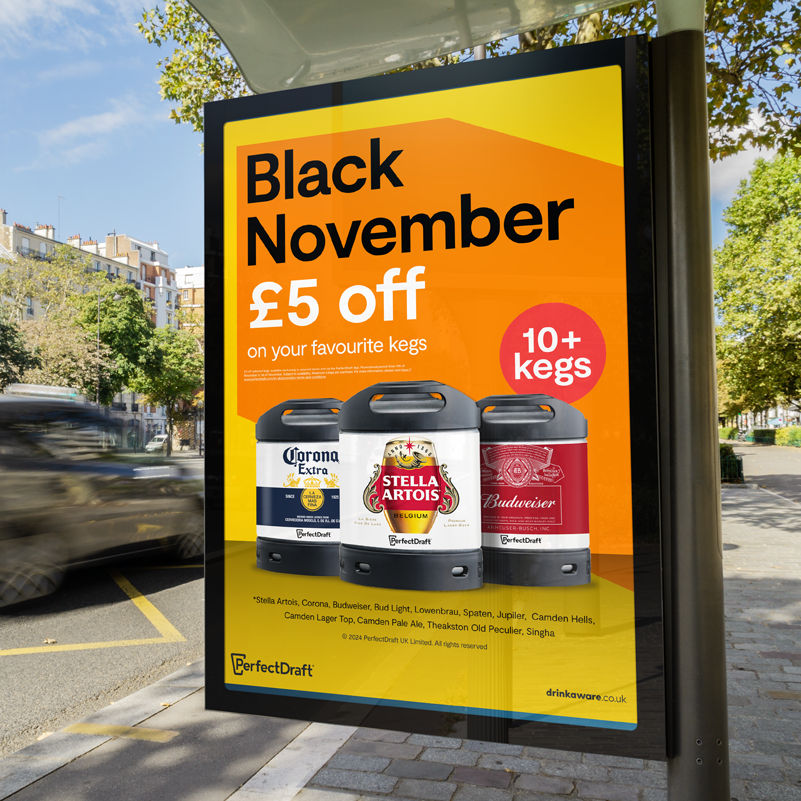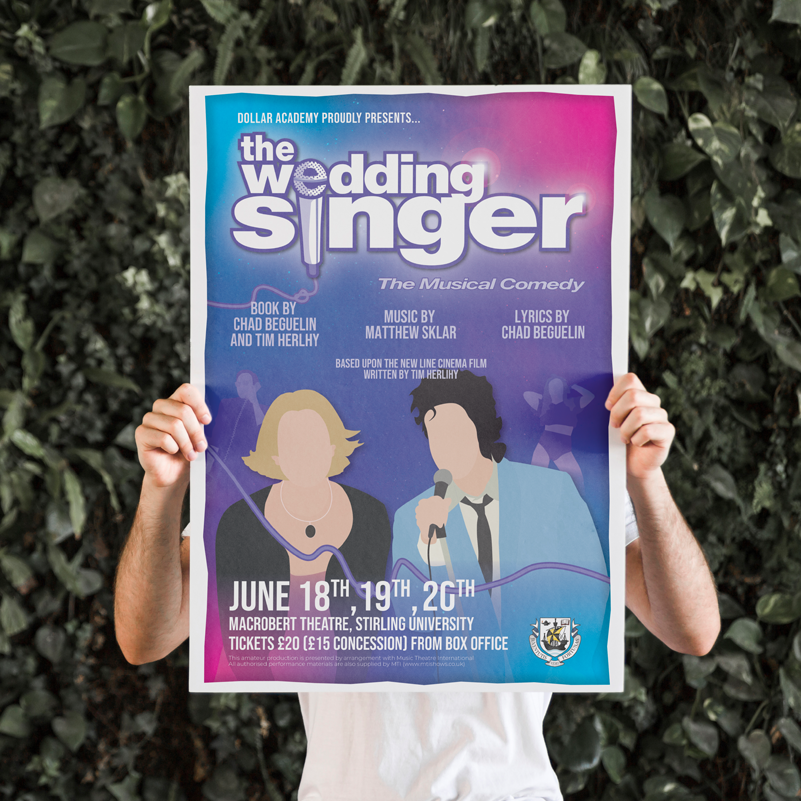The bustling season of trade shows, outdoor festivals, and industry conferences! Your business is gearing up, your staff are prepped, and your digital strategy is probably locked down. But hold on a minute, are you forgetting one of the most reliable, impactful, and genuinely cost-effective marketing tools?
I’m talking about the magnificent, versatile, and utterly unmissable printed poster.
As an experienced graphic designer and one of your friendly local printing specialists, I've seen countless businesses spend a fortune on digital ads, only to overlook the physical anchor that a great poster provides. When you're standing amongst a hundred other businesses vying for attention, a well-designed, high-quality poster is your silent, professional salesperson that never takes a tea break.
Stop the Scroll: The Unmissable Presence of Print
Think about walking into a busy exhibition hall. You’re bombarded with flashing screens, digital banners, and a cacophony of noise. Your eyes are desperately seeking an anchor, something solid and trustworthy to focus on. That’s where your large-format, eye-catching promotional poster comes into its own.
A well-placed poster doesn't require a Wi-Fi connection or battery life. It’s simply there, demanding attention with its sheer size, vibrant colour, and crisp resolution. In a world saturated with ephemeral digital content, a physical print offers a sense of permanence and quality. It tells potential customers that your business is established and takes presentation seriously. We're talking about that instant, subconscious judgement people make. Is this a scrappy, quick job, or a professional, quality outfit? Your print material sets the tone.
I remember a client, a small artisan coffee company, who were exhibiting for the first time. They were worried they’d be lost next to the big, flashy brands. I advised them to invest in just two A0-sized, matte-finish posters with a stunning close-up photo of their coffee beans and a simple, powerful tagline. They came back absolutely buzzing! People actually stopped, took photos of the poster, and used it as a landmark to find their stand again. Their simple, stunning printed posters cut through the digital noise with pure, tangible quality.
A Cost-Effective Campaign Anchor
When you look at your total event marketing budget—stand fees, staff wages, travel, not to mention expensive digital campaigns—the cost to produce a poster is remarkably low for the impact you get. They are truly one of the most affordable ways to achieve large-scale visual coverage.
Furthermore, posters have brilliant longevity. Unlike a pop-up banner that can look tired after a few events, or a digital ad that expires, a high-quality poster on durable stock can be reused throughout the season and beyond. They become part of your permanent marketing toolkit, justifying the initial cost many times over. Businesses serious about their physical presence should view these prints as a long-term investment.
Proximity and The Last-Minute Lifesaver
Events are dynamic. Deals change, speakers are swapped, and you sometimes need to make an urgent announcement—fast! This is where knowing a reliable printing service who can handle a quick turnaround is gold dust. We constantly get urgent requests from businesses at events needing new signage within hours.
A digital change can take time to process and update across all platforms. But a printed poster, especially when using a local-focused service, allows you to quickly produce and display highly specific, time-sensitive messaging right where your customers are. It’s the ultimate tool for a clear, immediate 'Call to Action' at your stand. This urgency is a key benefit that digital can’t always replicate in a high-pressure, physical environment.
It was the morning of a major tech conference, and one of my long-term clients realised they'd used the wrong booth number on all their existing signage! Panic stations, right? But because we have a great working relationship and they knew they could rely on a rapid turnaround from a local print shop, we managed to design, print, and deliver a set of corrected A1 'wayfinding' posters to their stand before the doors even opened. They were amazed, and it saved the day—and their lead generation targets! This perfectly illustrates the 'need for speed' that only responsive printing can provide.
Mastering the Art of the Effective Poster
Ready to create poster magic happen? Here are a few tips from a print professional to ensure your posters aren't just big, but brilliant:
-
Keep it Brief: Posters are for impact, not an essay. Use short, punchy headlines and bullet points. People are walking past; they need to grasp your message in two seconds.
-
High-Resolution is Non-Negotiable: Printing large-format means any design flaw will be magnified. Always use high-resolution, vector-based graphics for your logo and text.
-
Contrast is King: Ensure your text colour stands out sharply against your background. Poor contrast is the number one reason posters fail to catch the eye.
-
Choose the Right Finish: A glossy finish makes colours pop, which is great for high-visual posters. A matte finish is better for brightly lit halls, as it reduces glare and looks more sophisticated. Talk to your printing company about the best stock for your venue.
Your Time to Shine: Go Large, Go Print
Don't let your business blend into the digital background. Give yourself the competitive edge of a tangible, powerful marketing presence.
A striking, high-quality printed poster is an investment in your brand's authority, visibility, and professional standing. Whether you need a simple 'find us' sign or a magnificent promotional display, get in touch with your printers to help you produce posters that stop people in their tracks.
Ready to make a splash at your next event? Start planning your stunning poster prints today!
FREQUENTLY ASKED QUESTIONS (FAQ)
Q1: What are the standard poster sizes available for business events in the UK?
The most common and popular professional sizes used for events are A2 (420 x 594 mm), A1 (594 x 841 mm), and A0 (841 x 1189 mm). A2 is great for small displays or notice boards, A1 is the most popular multi-purpose size for trade show stands, and A0 provides maximum impact and visibility in large halls or window displays. Many printing specialists can also offer custom sizing if needed.
Q2: Are printed posters still effective compared to digital screens at events?
Absolutely. While digital screens have their place, printed posters offer a unique, non-intrusive, and always-on presence. They are highly cost-effective, durable, and don't rely on power, making them reliable. Critically, a high-quality print with an excellent design offers a visual anchor that cuts through the 'digital noise' and can convey a sense of gravitas and professionalism that flickering screens sometimes lack.
Q3: How quickly can I get high-quality poster printing done if I’m looking for a local service?
Speed depends on the printer, but many local and national printing companies offer excellent turnaround times. For standard sizes and lower quantities, it is very common to find services offering next-day delivery across the UK, and some local services can even offer same-day collection or delivery for urgent jobs, especially for plain paper or synthetic stock. Always check with your chosen supplier immediately if you have a tight deadline.
Q4: What paper finish is best for an exhibition poster, matte or glossy?
It depends on the lighting of your event venue. A glossy finish is excellent for making colours vibrant and 'pop', making it great for high-visual products, but it can suffer from distracting glare under bright exhibition spotlights. A matte finish reduces glare, offering a more sophisticated, easier-to-read surface, which is often preferable for stands in brightly lit halls. Ask your printing company for advice based on your specific venue.
Q5: What file format should I use when sending artwork to produce a poster?
For the best results with large-format posters, you should submit your artwork as a high-resolution PDF with embedded fonts and images. Ensure the resolution is at least 300dpi at full size. It is also crucial to include a 'bleed' (an extra 3-5mm around the edge of the design that is trimmed off) to ensure the colour goes right to the edge of the finished print without any white lines.
Posted by By Jenny on 5th Nov 2025






